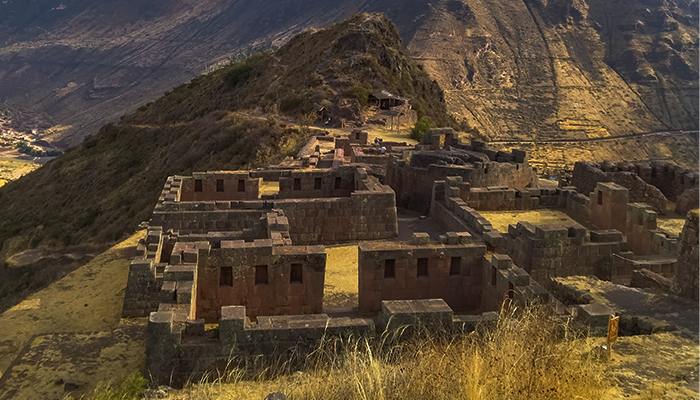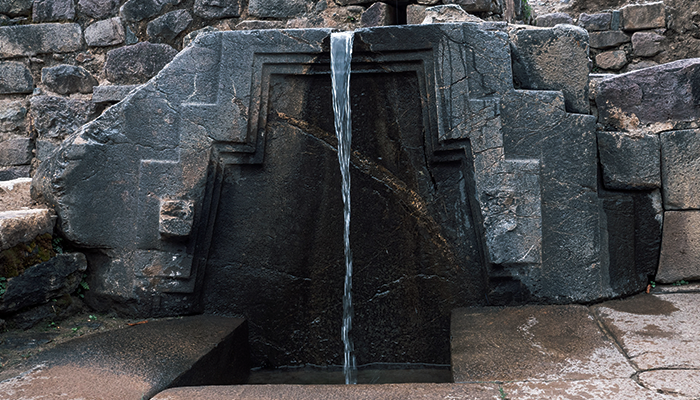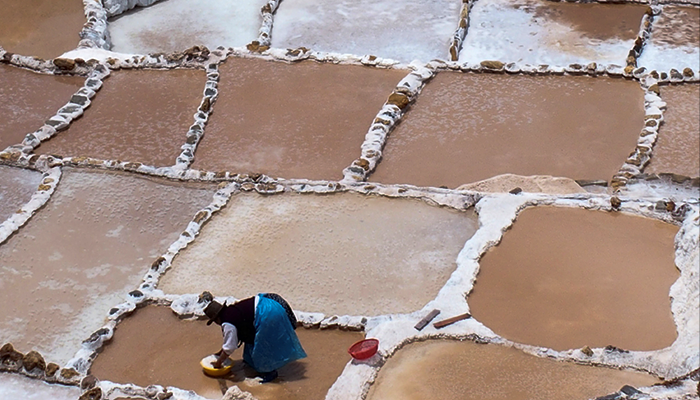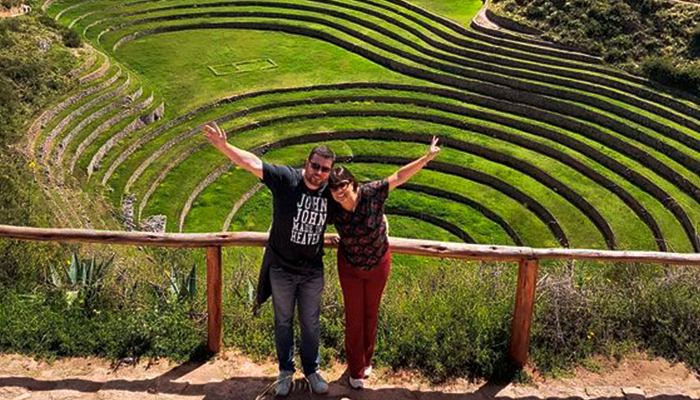How is the temperature and what is the location of the Sacred Valley of the Incas?
Are you thinking about visiting the Sacred Valley? If the answer is yes, in this article we are going to tell you everything about one of the main tourist attractions in Peru, which can be visited at any time of the year.
Here we are going to mention everything you need to know; from its altitude, its climate and its location, to the best archaeological sites in this recognized area.
The Sacred Valley was considered by the Incas as a very important place due to its geographical and climatic characteristics.
And in this area, in addition to enjoying incredible landscapes and important archaeological sites, you can also visit typical towns where we can enjoy excellent national cuisine and marvel at their local craft markets.
We invite you to continue reading and discover everything that the Sacred Valley has to offer.

What should you know about the Sacred Valley of the Incas?
The Sacred Valley location is northeast of the city of Cusco. This area is surrounded by high mountains, has several rivers and is located between the towns of Ollantaytambo and Pisac.
The altitude of the Sacred Valley ranges between 2,050 and 3,000 meters above sea level. This is a factor to take into account, since it is a fairly considerable height and it is something that normally affects tourists, causing physical discomfort. Therefore, it is recommended that you always take your time to acclimatize once you arrive there, before you start any tours or intense activities.
The weather in the Sacred Valley is usually pleasant, the average maximum temperature varies between 19 °C (66 °F) and 21 °C (69 °F) during the day. During the night is when there are much lower temperatures, which vary between 4 °C (39 °F) and 6 °C (43 °F).
Although the temperature in the Sacred Valley does not vary much throughout the year, we must mention that its climate is characterized by presenting two well-defined seasons; the dry season and the rainy season.
Dry Season
The dry season is from April to October. Due to the almost constant presence of the sun, the dry season is considered the high season to visit the Sacred Valley.
At this time there are mostly sunny days with somewhat high temperatures during the day, but at night the presence of frost is frequent, so temperatures are usually very low.
During this time it will be possible to enjoy the walks through the archaeological sites without complications. It is also the ideal time for trekking, canoeing in the river, horseback riding and having a permanent company of the snow-capped mountains of the Urubamba mountain range.
Although this is a time when there is little rainfall, we must also say that it is the time of the year where we will find more people in any place we visit.
Being the high season, all the tourist spots in the Sacred Valley are very crowded and it is the time when restaurants and hotels have higher prices.
If we want to visit the Sacred Valley during the dry season, something important to consider is clothing. Because the weather in the Sacred Valley is very changeable, it is recommended to use layers of clothing to be able to remove as the temperature feels higher. And it is also very important to have a good coat.
Rainy Season
The rainy season goes from November to March. During this season, the temperature in the Sacred Valley is a little bit warmer and more pleasant.
During this season, especially in the month of February, the rains are very frequent, but actually it does not rain uninterruptedly throughout the day, it occurs in periods of time spread out along the journey.
Something that is special about this season is its color. Thanks to the rains, the plantations, the crop fields and the mountains that make up the Sacred Valley, acquire an intense green color and are covered with multicolored flowers, it is the moment in which the natural landscapes of the area shine best.
Another feature of this season is that this is the ideal time to enjoy some typical products, such as giant corn. During the rainy season is when we will find the typical street vendors of the most delicious corn with cheese that we cannot stop trying.
Contrary to the dry season, during the rainy season we will surely have more comfort when taking the tours, since fewer tourists visit this area during this time. And since it is considered low season, we will find better prices, especially in hotels and restaurants.
If we decide to visit the Sacred Valley of the Incas in the rainy season, it is important to bear in mind that it is ideal to have trekking shoes and a light but waterproof and windproof jacket, to have with us in case the rains surprise us, but at the same time, it should not be very warm, since during the moments that it does not rain and the sun rises, the temperatures are much higher.
Main tourist points of the Sacred Valley of the Incas
Pisac
The inhabitants of the town of Pisac are excellent artisans, producers of various objects that they sell at their fair. There you will find ceramic items, decoration and textiles. The fair is a mandatory stop for all those who visit the area.
In addition, another must-see in the town of Pisac is its archaeological site. There we can find a variety of terraces and agricultural platforms, and the most striking thing about this place is that, during the Inca era, it functioned as a center for astronomical studies.

Ollantaytambo
This area is very crowded since, in addition to being able to observe incredible constructions from the Inca period in its archaeological site, another tourist spot is the town of Ollantaytambo itself, where houses from the Inca period are still preserved, as well as streets, walls and channels. In Ollantaytambo, in addition to enjoying beautiful landscapes, you can enjoy the mystique of its town.

Chinchero
In this town you can see a perfect mix between colonial and Inca architecture. This place still remarkably preserves the Andean culture. Here you can visit textile centers to learn about ancestral wool processing techniques that are used in local and artisan production.

Salineras de Maras
The Salineras de Maras are made up of more than 3,000 pools that have been active since Inca times. The inhabitants of Maras work to this day, in an ancestral way and through a manual extraction system, to continue marketing salt as it was done hundreds of years ago.

Moray
The important archaeological site of Moray is characterized by its ingenious circular terraces. It is made up of 3 «coliseums» or terrace systems that functioned as an agricultural laboratory for the Incas. They were mainly a research center where experiments were carried out on crops from different regions at different heights, taking advantage of the fact that the layout of the platforms produces diverse microclimates.

Meet our tours to the Sacred Valley of the Incas
From Guru Explorers we have to offer different tours to the Sacred Valley so you can visit its best points of attraction.
Each tour has a different route to suit your taste and need.
We propose you to take a general tour of the area, passing through Pisac, Urubamba, Ollantaytambo and Chinchero, and also you can visit the Salineras de Maras and the archaeological site of Moray.
In addition, we have differential tours, in which you can bring out your most adventurous side and carry out activities designed to enjoy this incredible place in a different way.
Among these tours, in which we seek to combine adventure and nature, we have options in which you can take four-wheel drive tours of the area, climb with zipline, go glamping in the Sacred Valley or also enjoy a picnic with llamas in the open air.
And another tourist option that we propose is to visit the Misminay peasant community, a truly unique experience, in which you will be able to feel part of the local population, learn about their customs and learn from the inside how this interesting community lives.
Conclusions
As we could see, the Sacred Valley is a place that welcomes us openly throughout the year. Although each season has its advantages and disadvantages, the time to visit this area will depend on our interests when visiting the place.
The location of the Sacred Valley means that this area has the characteristic climate of the Peruvian Andes.
And this is why, in terms of the weather, we must always be prepared for rain, cold and heat, since the mountain climate is quite unpredictable.
As we already mentioned, from Guru Explorers we offer tours for all tastes, therefore, whatever the moment, do not miss the opportunity to discover everything that the Sacred Valley of the Incas has to show you!